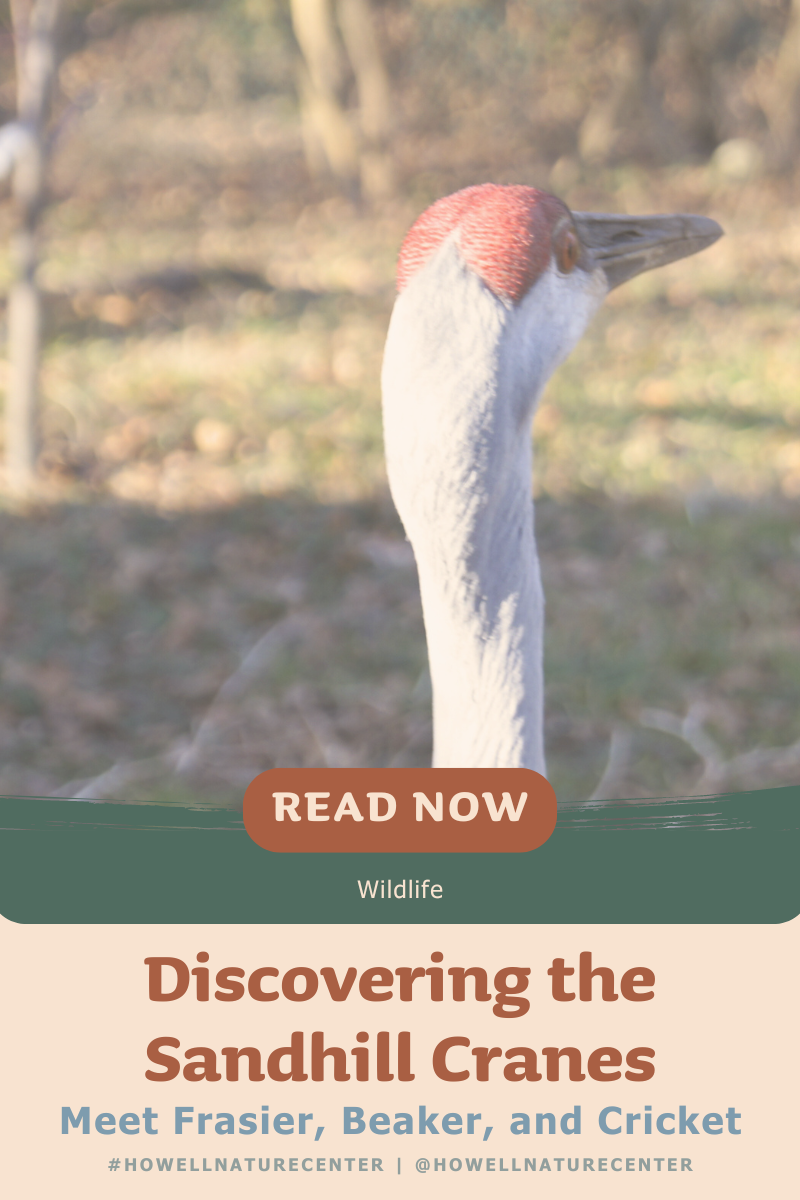In this post, we’re turning our focus to the captivating world of Sandhill Cranes, specifically three unique individuals named Frasier, Beaker, and Cricket. Through their stories, we aim to delve into the biology, behavior, and conservation of Sandhill Cranes, offering a glimpse into the lives of these magnificent birds.
Introducing Frasier, Beaker, and Cricket
Frasier: The Veteran Crane with a Tale
- Distinguishing Features: Frasier can be recognized by his crooked beak and a wing that droops due to a permanent injury, rendering him unable to fly.
- Background: Hatched before 1999, Frasier’s extensive life experience contributes to our understanding of crane behavior and adaptability.
- Visibility: Frasier, alongside Beaker, is not typically visible to the public, living a more secluded life due to his condition.
Beaker: The Human-Friendly Crane
- Distinguishing Features: Beaker is known for her tendency to approach visitors along the fence line, a behavior stemming from her imprinting on humans.
- Background: With her hatch year in 2019, Beaker represents the younger generation of cranes under human care.
- Interaction: Despite her human imprinting, Beaker shares her space with Frasier and Cricket, albeit behind the scenes from the public eye.
Cricket: The Stoic Survivor
- Distinguishing Features: Cricket is identifiable by his slightly droopy wings due to permanent injuries but does not have the crooked beak like Frasier.
- Background: Hatched before 2020 and coming into care as an adult, Cricket’s resilience is a testament to the survival capabilities of Sandhill Cranes.
- Habitat Use: Cricket, along with his companions, may seek the warmth of their shed during colder days or might be found enjoying the tranquility at the back of their exhibit or exploring the front areas.
Understanding Sandhill Cranes: Ecology and Behavior
Sandhill Cranes are among the most ancient and visually striking birds in North America. Known for their noisy calls and conspicuous presence, these cranes offer a unique opportunity to study avian behavior and ecology.
Habitat and Migration: Preferring large freshwater marshes, Sandhill Cranes adapt to various habitats, including prairies and grain fields, especially during their winter migration. Their migration patterns are a spectacle, with large flocks moving between breeding grounds in the tundra to wintering sites further south.
Diet: These cranes have a varied diet consisting of insects, worms, amphibians, and grain, showcasing their ability to adapt to different food sources across seasons and habitats.
Conservation Status: With a stable population, Sandhill Cranes demonstrate the success of current conservation efforts, although continuous monitoring is essential to address any future challenges.
Coexisting with Cranes: Insights for Conservation
The stories of Frasier, Beaker, and Cricket not only provide a closer look at the individual lives of Sandhill Cranes but also highlight the broader conservation issues facing these and other avian species. Understanding their habitat needs, diet, and behavior can inform conservation strategies that ensure the stability and growth of crane populations for generations to come.
In Conclusion: Celebrating Crane Conservation
Frasier, Beaker, and Cricket serve as ambassadors for their species, offering valuable lessons on resilience, adaptability, and the intricate balance between humans and wildlife. By learning about these individuals and their species, we can foster a deeper appreciation for the natural world and the importance of conservation efforts that allow us to coexist with these remarkable birds.


